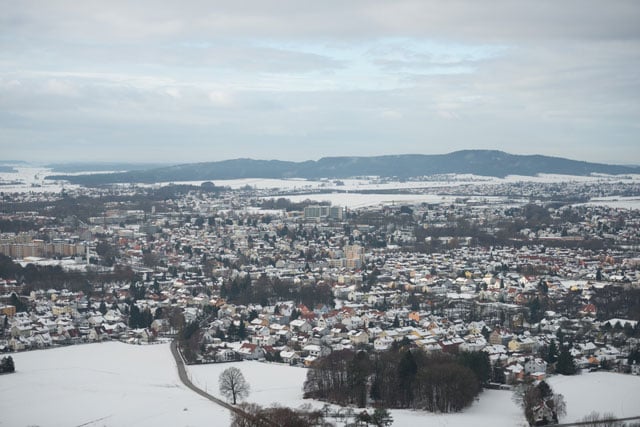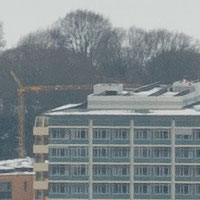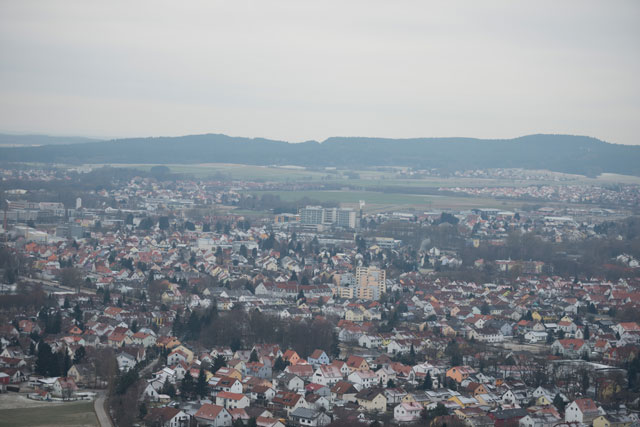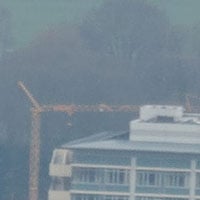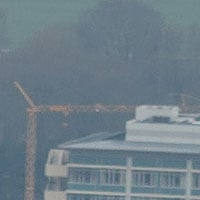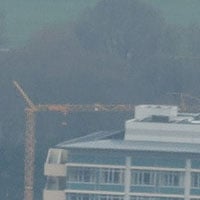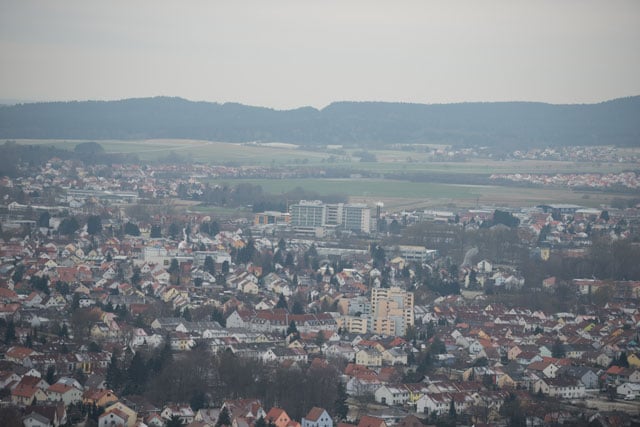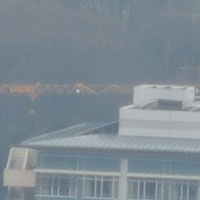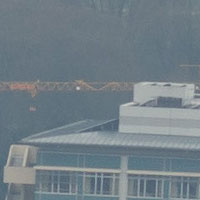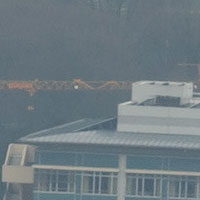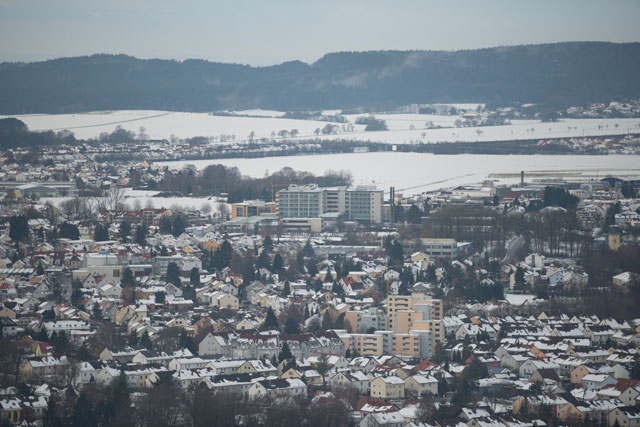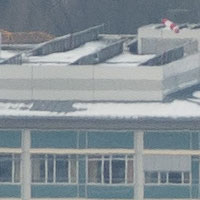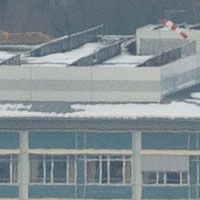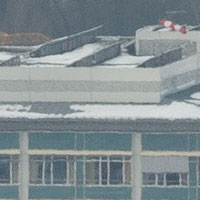Nikon 70-200mm f2.8G VR II review
-
-
Written by Thomas
Quality
Testing: Longitudinal Chromatic Aberration
With lenses offering an aperture of f2.8 or larger I test for longitudinal CA (loCA, a.k.a. “axial color” or “bokeh CA”).The lens shows some slight magenta coloration on the left (foreground) and greenish hues on the right (background). But this is practically negligible. By f5.6 the effect is practically gone. This is comparable to the Sigma 70-200/2.8 OS.
Nikon 70-200mm f/2.8G VR Longitudinal Chromatic Aberration (loCA) |
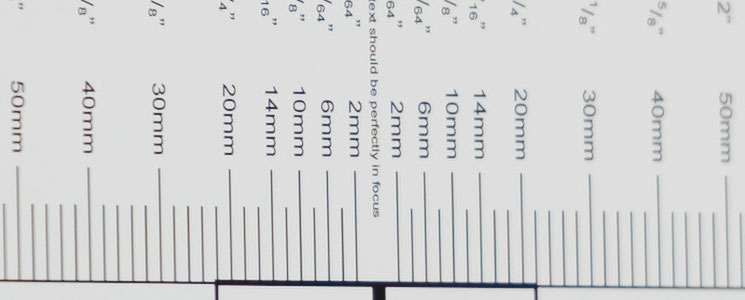 |
| 100% crop, 200mm, f2.8, left=closer, right=farther away |
Sharpness and contrast
Let’s have a look at the theoretical performance (MTF-charts) at the wide and the long end first:
Nikon 70-200mm f/2.8G VR MTF | ||
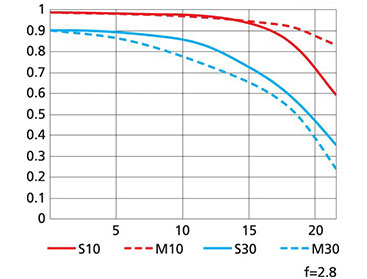 | 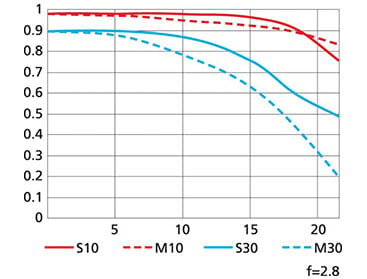 | |
| at 70mm, f2.8 | at 200mm, f2.8 | |
These charts show the lens-performance at the largest aperture f2.8. Higher values are better and the closer the dotted and the continuous lines of each color are together the less astigmatism (= resolution depends on the orientation of the test-pattern) the lens has. The x-axis displays the distance from the optical axis (=center of the sensor) in mm. I’ll show you the real-life performance at 4 mm (center), 13 mm (DX-corner), and 20 mm (FX-corner) on a D800.
From the charts the new lens should perform on a high level regarding overall contrast at least in the DX image-circle. Sharpness declines gracefully with little sign of astigmatism. On paper the lens does not looks like a champion of sharpness in the corners but the smoothness and the parallelism of the curves suggest the lens should be pretty free of nasty surprises. But let’s see how this theoretical performance translates into real life results in the sharpness test based on Siemens-stars.
What follows are near-center results (first column) followed by DX-corner results and FX-corner results on a D800. The D800 results from the DX-corner should be a very good approximation for performance on a 16MP DX sensor (like the D7000), because the pixel-pitch of both sensors are the same. But differences in the AA-filter and micro-lens-design of a D800 and a D7000 might yield different end-results.
Processing was done in Lightroom 4.3 from RAW at camera standard settings. Noise-reduction is set to 0, sharpening to 70/0.5/36/10, with no extra tone, color, or saturation-adjustment. White-balance was adjusted to a neutral white and I did some exposure compensation to make the brightness match. CA-removal is ON.
The following are all 100% crops!
Let’s have a look at the performance at 70mm first:
Nikon 70-200mm f/2.8G VR with Nikon D800 100% crop from center | Nikon 70-200mm f/2.8G VR with Nikon D800 100% crop from DX-corner | Nikon 70-200mm f/2.8G VR with Nikon D800 100% crop from FX-corner | ||
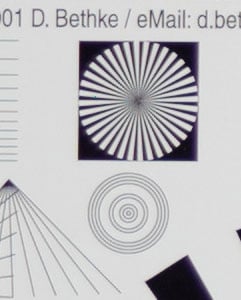 | 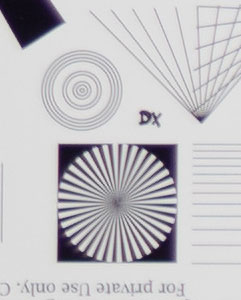 | 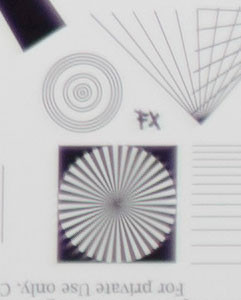 | ||
70mm, f2.8, 100 ISO | 70mm, f2.8, 100 ISO | 70mm, f2.8, 100 ISO | ||
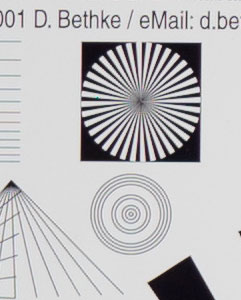 | 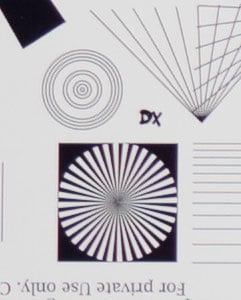 | 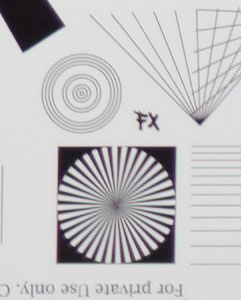 | ||
70mm, f4.0, 100 ISO | 70mm, f4.0, 100 ISO | 70mm, f4.0, 100 ISO | ||
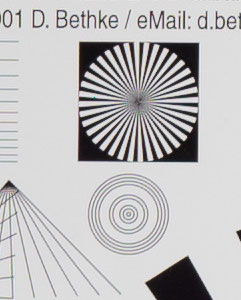 | 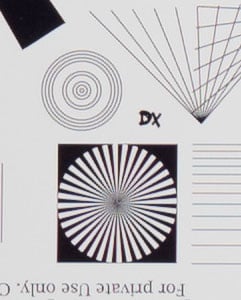 | 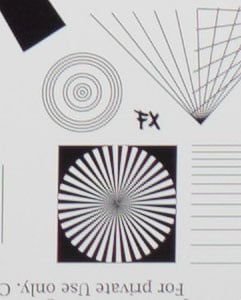 | ||
70mm, f5.6, 100 ISO | 70mm, f5.6, 100 ISO | 70mm, f5.6, 100 ISO | ||
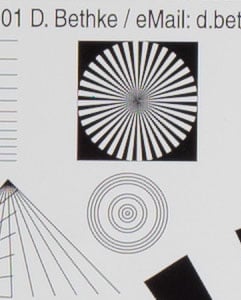 | 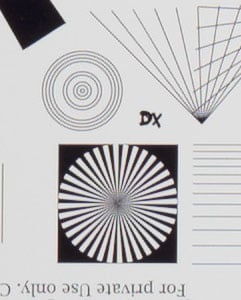 | 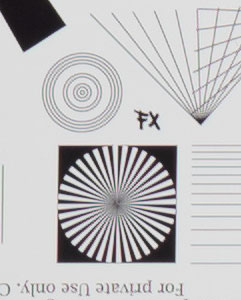 | ||
70mm, f8.0, 100 ISO | 70mm, f8.0, 100 ISO | 70mm, f8.0, 100 ISO | ||
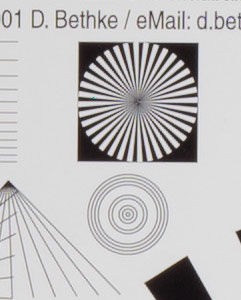 | 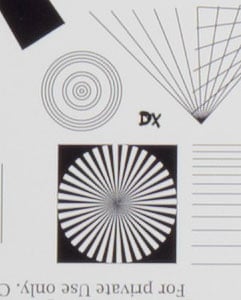 | 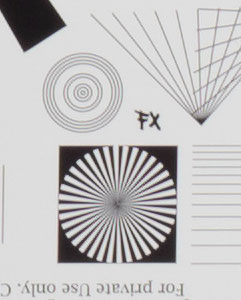 | ||
70mm, f11, 100 ISO | 70mm, f11, 100 ISO | 70mm, f11, 100 ISO |
These 100% crops directly from a 36MP D800 sensor show that this lens is pretty sharp wide open in the center. The DX-corner and FX-corner show also good resolution wide open but contrast is marred by residual spherical aberration. Stop down to f4 for very good DX-corners or f5.6 for very good FX-corners. Diffraction is setting in at f11. Distortions are minimal.
Performance at 105mm:
Nikon 70-200mm f/2.8G VR with Nikon D800 100% crop from center | Nikon 70-200mm f/2.8G VR with Nikon D800 100% crop from DX-corner | Nikon 70-200mm f/2.8G VR with Nikon D800 100% crop from FX-corner | ||
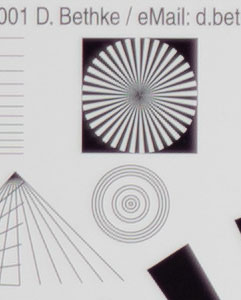 | 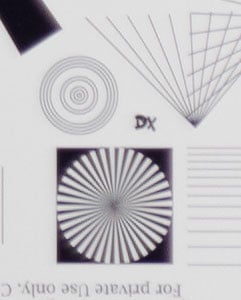 | 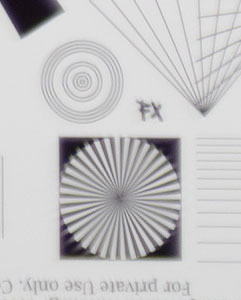 | ||
105mm, f2.8, 100 ISO | 105mm, f2.8, 100 ISO | 105mm, f2.8, 100 ISO | ||
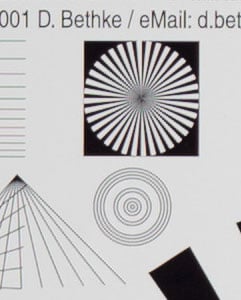 | 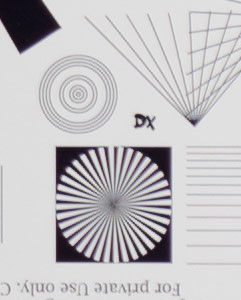 | 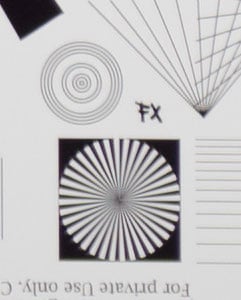 | ||
105mm, f4.0, 100 ISO | 105mm, f4.0, 100 ISO | 105mm, f4.0, 100 ISO | ||
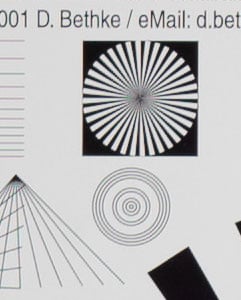 | 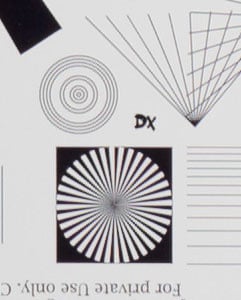 | 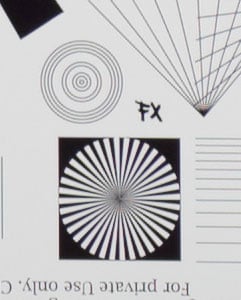 | ||
105mm, f5.6, 100 ISO | 105mm, f5.6, 100 ISO | 105mm, f5.6, 100 ISO | ||
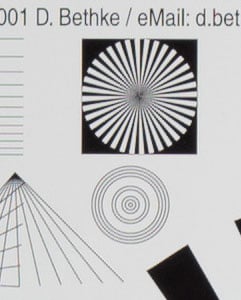 | 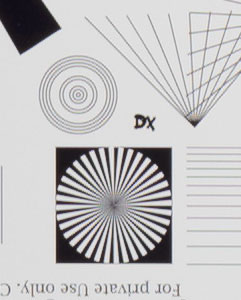 | 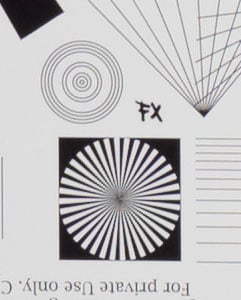 | ||
105mm, f8.0, 100 ISO | 105mm, f8.0, 100 ISO | 105mm, f8.0, 100 ISO | ||
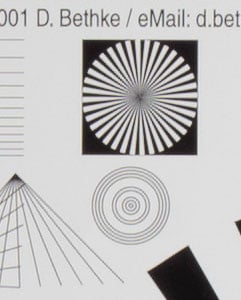 | 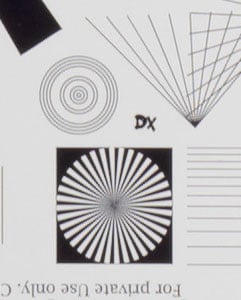 | 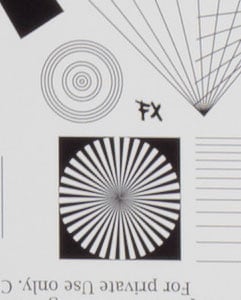 | ||
105mm, f11, 100 ISO | 105mm, f11, 100 ISO | 105mm, f11, 100 ISO |
At 105mm the lens shows a similar performance to 70mm, although the center is showing some haloing from residual spherical aberrations now too.
Let’s move on to 150mm:
Nikon 70-200mm f/2.8G VR with Nikon D800 100% crop from center | Nikon 70-200mm f/2.8G VR with Nikon D800 100% crop from DX-corner | Nikon 70-200mm f/2.8G VR with Nikon D800 100% crop from FX-corner | ||
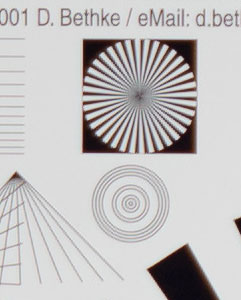 | 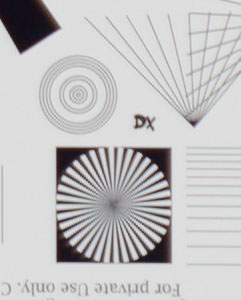 | 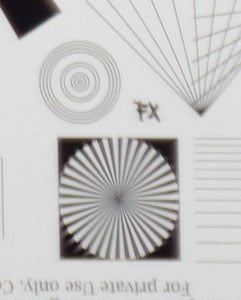 | ||
150mm, f2.8, 100 ISO | 150mm, f2.8, 100 ISO | 150mm, f2.8, 100 ISO | ||
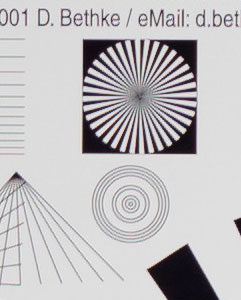 | 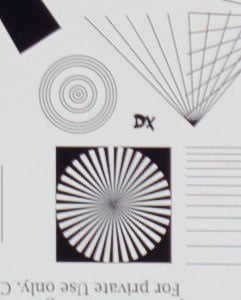 | 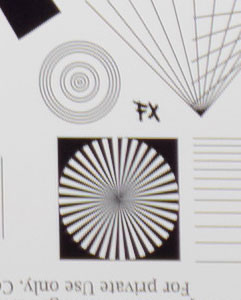 | ||
150mm, f4.0, 100 ISO | 150mm, f4.0, 100 ISO | 150mm, f4.0, 100 ISO | ||
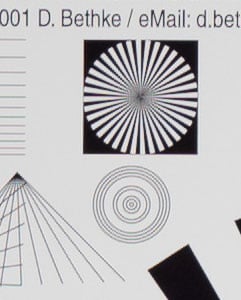 | 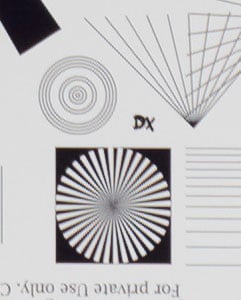 | 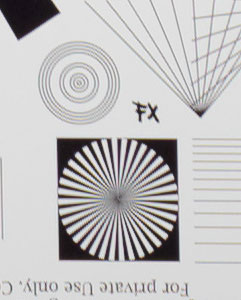 | ||
150mm, f5.6, 100 ISO | 150mm, f5.6, 100 ISO | 150mm, f5.6, 100 ISO | ||
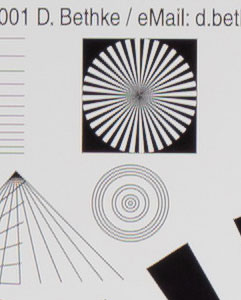 | 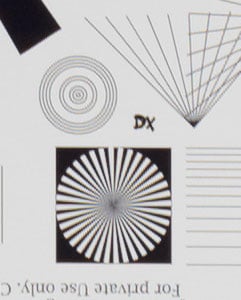 | 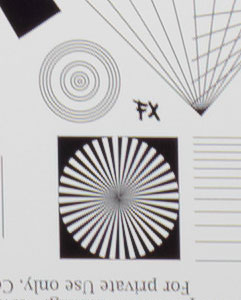 | ||
150mm, f8.0, 100 ISO | 150mm, f8.0, 100 ISO | 150mm, f8.0, 100 ISO | ||
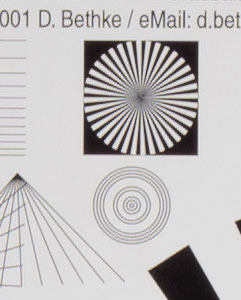 | 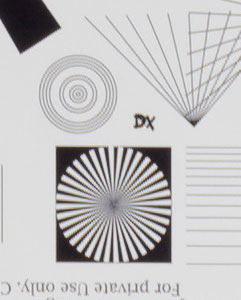 | 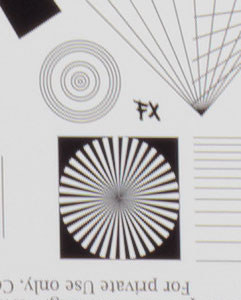 | ||
150mm, f11, 100 ISO | 150mm, f11, 100 ISO | 150mm, f11, 100 ISO |
While the haloing in the center is reduced at 150mm the FX corner is now at its worst wide open. Stopping down improves the situation but not as soon as with the shorter focal lengths. A slight pincushion distortion has developed.
Performance at 200mm:
Nikon 70-200mm f/2.8G VR with Nikon D800 100% crop from center | Nikon 70-200mm f/2.8G VR with Nikon D800 100% crop from DX-corner | Nikon 70-200mm f/2.8G VR with Nikon D800 100% crop from FX-corner | ||
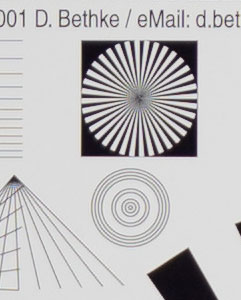 | 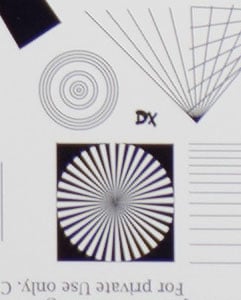 | 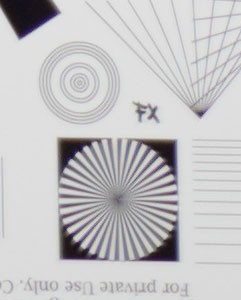 | ||
200mm, f2.8, 100 ISO | 200mm, f2.8, 100 ISO | 200mm, f2.8, 100 ISO | ||
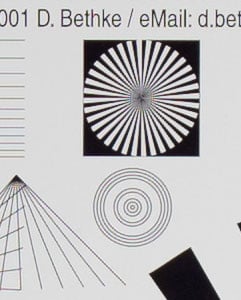 | 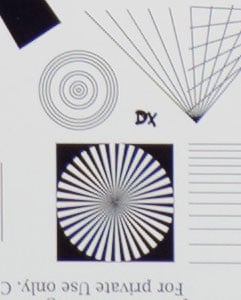 | 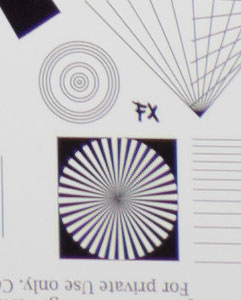 | ||
200mm, f4.0, 100 ISO | 200mm, f4.0, 100 ISO | 200mm, f4.0, 100 ISO | ||
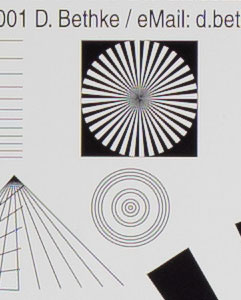 | 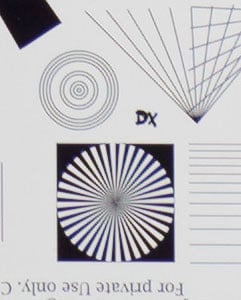 | 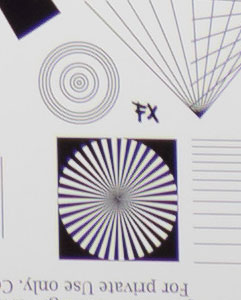 | ||
200mm, f5.6, 100 ISO | 200mm, f5.6, 100 ISO | 200mm, f5.6, 100 ISO | ||
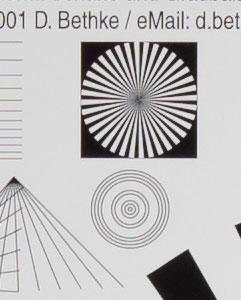 | 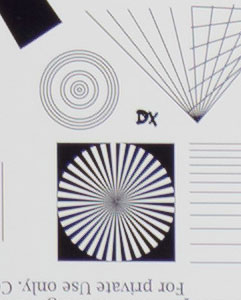 | 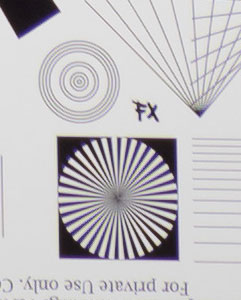 | ||
200mm, f8.0, 100 ISO | 200mm, f8.0, 100 ISO | 200mm, f8.0, 100 ISO | ||
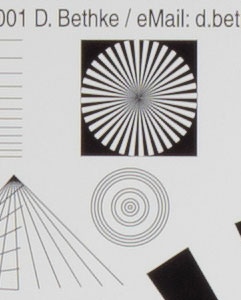 | 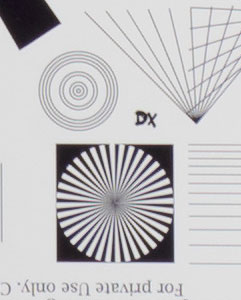 | 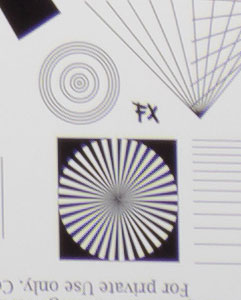 | ||
200mm, f11, 100 ISO | 200mm, f11, 100 ISO | 200mm, f11, 100 ISO |
At 200mm the performance wide open is pretty even across the frame. The FX-corner shows its best performance of all focal lengths and is very good already at f4.0. The pin-cushion distortion is now clearly visible.
Performance at large distances
The Siemens-star test-targets are shot at a distance of 40x focal length (i.e. at 4m for 100mm f.l.). But performance of lenses also depends on the shooting distance. Therefore I do another series of test-shots of a landscape dubbed the “Unremarkables” where you can measure distances in km, not meter. Processing was done in Lightroom 4.3 from RAW at Adobe Standard settings. Noise-reduction is set to 0, sharpening to 70/0.5/36/10, with no extra tone, color, or saturation-adjustment. There’s no tinkering with vignette-control so you see it here as it is produced by the lens. Focus was acquired at the largest aperture in contrast-based AF and not changed for other apertures.
You can click on each image to access the large original. Please respect our copyright and only use those images for personal use.
The main image shows the complete scene at f2.8 to give you an impression of the angle of view and to judge vignetting. This is followed by one row of 100% crops at different apertures each from the middle and the right (FX-)border. Let’s start with 70mm focal length:
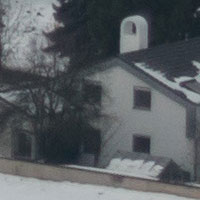 |  | 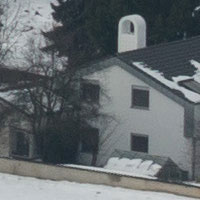 | ||
70mm, f2.8, 200 ISO, border | 70mm, f4.0, 200 ISO, border | 70mm, f8, 200 ISO, border | ||
The performance at 70mm wide open is quite astonishing at the border. At f4.0 the quality is very good across the frame. Vignetting at f2.8 is relatively low.
The next two sets at 105mm and 150mm are from a later day, as the original ones were a bit out of focus. Unfortunately visibility was not optimal on that day so the general contrast came out pretty low.
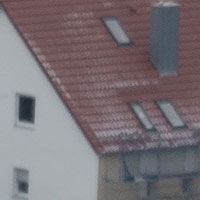 | 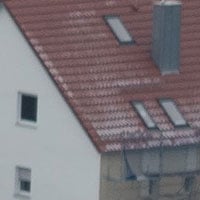 | 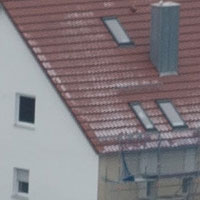 | ||
105mm, f2.8, 100 ISO, border | 105mm, f4.0, 100 ISO, border | 105mm, f8, 100 ISO, border | ||
At 105mm sharpness is OK across the frame at f2.8. The center is very good at f4.0 but the corner profits from stopping down further. Only a little vignetting.
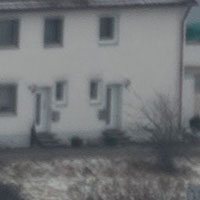 | 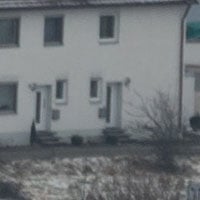 | 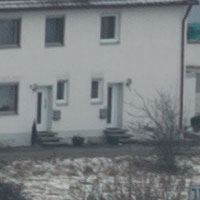 | ||
150mm, f2.8, 100 ISO, border | 150mm, f4.0, 100 ISO, border | 150mm, f8, 100 ISO, border | ||
Same story at 150mm.
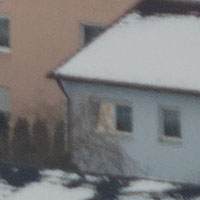 | 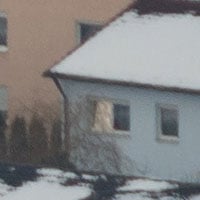 | 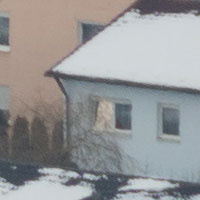 | ||
200mm, f2.8, 200 ISO, border | 200mm, f4.0, 200 ISO, border | 200mm, f8, 200 ISO, border | ||
At 200mm focal length the lens’ center-performance returns to very good at f2.8 while the border needs at least f5.6 to perform on a similar level. This results from a slight field curvature: optimal focus for the border-target would have yielded better results there albeit with the drawback of reducing the center sharpness. Pretty little vignetting.
All-in-all the lens is an impressive performer near and far with a slight dip in sharpness around 150mm focal length. Field curvature at 200mm makes it not ideally suited for flat objects, like landscapes at infinity. But other than that it produces sharp and contrasty images with a very good to excellent center from f2.8, a very good DX-corner from f4.0 and a FX-corner to match that sometimes needs stopping down to f5.6.
